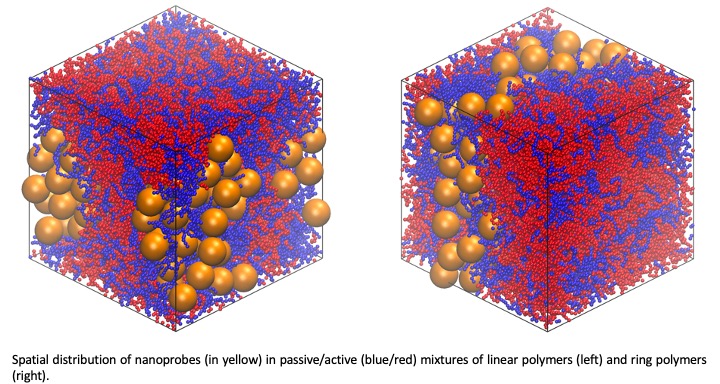We study the motion of dispersed nanoprobes in entangled active-passive polymer mixtures. By comparing the two architectures of linear vs. unconcatenated and unknotted circular polymers, we demonstrate that novel, rich physics emerge. For both polymer architectures, nanoprobes of size smaller than the entanglement threshold of the solution move faster as activity is increased and more energy is pumped in the system. For larger nanoprobes, a surprising phenomenon occurs: while in linear solutions they move qualitatively as before, in active-passive ring solutions nanoprobes {\it decelerate} with respect to the purely passive conditions. We rationalize this effect in terms of the non-equilibrium, topology-dependent association (clustering) of nanoprobes to the cold component of the ring mixture reminiscent of the recently discovered [Weber et al., Phys. Rev. Lett. 116, 058301 (2016)] phase separation in scalar active-passive mixtures. We conclude with a potential connection to the microrheology of the chromatin in the nuclei of the cells.
Download a copy of the manuscript (preprint version)

